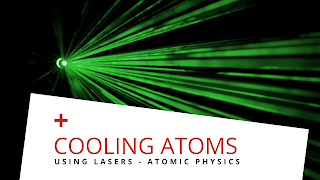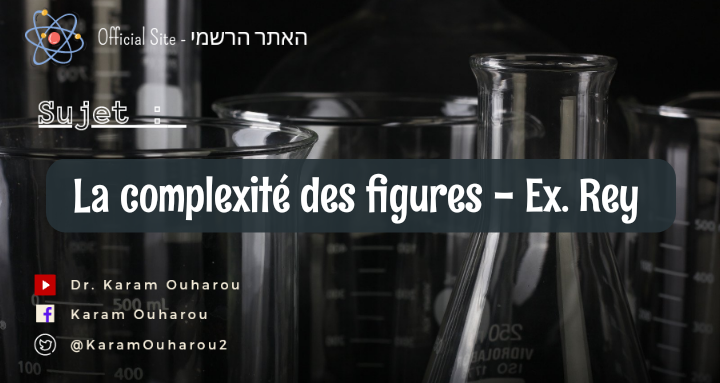Cooling of atoms using lasers - Atomic optics
Laser Cooling
Starting in about 1985 with the work of Steven Chu and others, the use of lasers to achieve extremely low temperatures has advanced to the point that temperatures of 10-9 K have been reached. If an atom is traveling toward a laser beam and absorbs a photon from the laser, it will be slowed by the fact that the photon has momentum p = E/c = h/λ. If we take a sodium atom as an example, and assume that a number of sodium atoms are freely moving in a vacuum chamber at 300K, the rms velocity of a sodium atom from the Maxwell speed distribution would be about 570 m/s. Then if a laser is tuned just below one of the sodium d-lines (589.0 and 589.6 nm, about 2.1 eV), a sodium atom traveling toward the laser and absorbing a laser photon would have its momentum reduced by the amount of the momentum of the photon. It would take a large number of such absorptions to cool the sodium atoms to near 0K since one absorption would slow a sodium atom by only about 3 cm/s out of a speed of 570 m/s. A straight projection requires almost 20,000 photons to reduce the sodium atom momentum to zero. The change in speed from the absorption of one photon can be calculated from Δp/p = pphoton/mv = Δv/v Δv = pphoton/m That seems like a lot of photons, but according to Chu, a laser can induce on the order of 107 absorptions per second so that an atom could be stopped in a matter of milliseconds. A conceptual problem is that an absorption can also speed up an atom if it catches it from behind, so it is necessary to have more absorptions from head-on photons if your goal is to slow down the atoms. This is accomplished in practice by tuning the laser slightly below the resonance absorption of a stationary sodium atom. From the atom's perspective, the headon photon is seen as Doppler shifted upward toward its resonant frequency and it therefore more strongly absorbed than a photon traveling in the opposite direction which is Doppler shifted away from the resonance. In the case of our room temperature sodium atom above, the incoming photon would be Doppler shifted up 0.97 GHz, so to get the head on photon to match the resonant frequency would require that the laser be tuned below the resonant peak by that amount. This method of cooling sodium atoms was proposed by Theodore Hansch and Arthur Schawlow at Stanford University in 1975 and achieved by Chu at AT&T Bell Labs in 1985. Sodium atoms were cooled from a thermal beam at 500K to about 240 mK. The experimental technique involved directing laser beams from opposite directions upon the sample, linearly polarized at 90° with respect to each other. Six lasers could then provide a pair of beams along each coordinate axis. The effectively "viscous" effect of the laser beams in slowing down the atoms was dubbed "optical molasses" by Chu. Continuing to cool the sodium atoms by this method requires the tuning of the laser upward in frequency toward the atomic resonant frequency because the Doppler shift will be smaller. This places a practical limit on how much cooling can be achieved, because the differential cooling rate is reduced and at a certain point the cooling mechanism is foiled by heating due to the random absorption and reemission of photons. This practical limit is characterized by 2kT = Eresonant photon, which at the low temperature of 240 mK would correspond to photon energies around 4 x 10-8 eV. Such energies can characterize the Zeeman split energy levels of the atoms in the magnetic fields produced by the laser photons. It was found that the splittings which limited the original laser cooling processes could be exploited to lower the ultimate temperatures below these limits. With the opposing laser beams with perpendicular linear polarization, atoms could be selectively driven or "optically pumped" into the lower energy levels. These lasers create a small region of space about a quarter wavelength in extent where the atoms can drift to a region where their energy is relatively higher, only to be pumped downward to a lower energy again. This was dubbed "Sisyphus cooling" after the legendary tormented man who was condemned to perpetually roll a rock up a hill, only to have it roll down again. With the "optical molasses" and the polarization gradient in the region of opposing laser beams, temperatures as low as 35 mK for sodium and 3 mK for cesium were obtained.
©Karam OUHAROU. The author grants permission to copy, distribute and display this work in unaltered form, with attribution to the author, for noncommercial purposes only. All other rights, including commercial rights, are reserved to the author.
Nous sommes ravis d'améliorer notre service pour vous! | |||
© CC-BY-SA | COPYRIGHT 2021 |


Comments